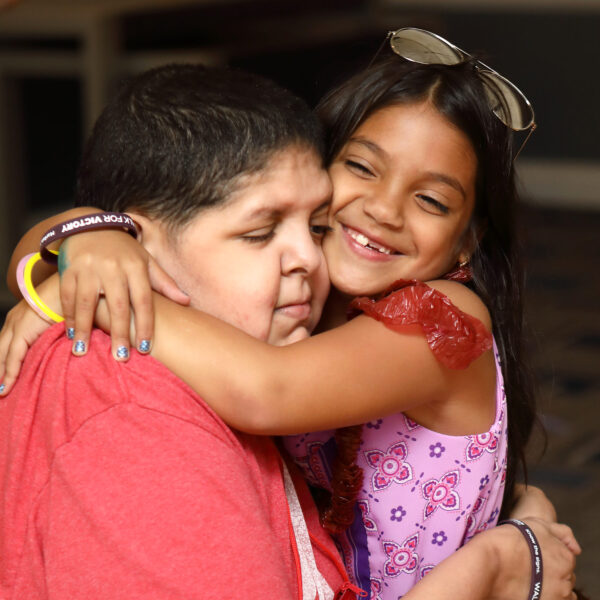What is Neonatal or Infantile Marfan Syndrome?
In general terms, most doctors use neonatal Marfan syndrome to describe children who have striking outward characteristics at the time of birth, as well as significant cardiovascular (heart) involvement in very early infancy.
Neonatal Marfan syndrome (also called infantile Marfan syndrome) is a term used to designate a severe presentation of Marfan syndrome that is evident in early infancy and shows rapid progression during childhood. Importantly, there are no specific criteria for use of this term. As a result, it is difficult to make broad generalizations about the diagnosis, management, or prognosis of neonatal Marfan syndrome.
What are the Key Features of Neonatal Marfan Syndrome?
Many doctors use neonatal Marfan syndrome to describe the severe end of the clinical spectrum of Marfan syndrome, rather than considering this a discrete clinical entity. Care should be taken to avoid use of this designation simply because a child is diagnosed with Marfan syndrome in early infancy, as this might simply relate to an early evaluation due to a family history of Marfan syndrome or a particularly astute pediatrician, as opposed to atypically severe disease severity.
When a person has these features, it is important to be evaluated for neonatal Marfan syndrome.
You may contact our Help and Resource Center with questions anytime at marfan.org/ask.
To learn more about neonatal Marfan syndrome and its diagnosis and treatment, download:
-
Cardiovascular
- Breathing difficulties, severe prolapse and leakage through the mitral and/or tricuspid heart valves that can lead to poor squeeze of the heart muscle (heart failure), aortic root dilatation (enlargement)
-
Eyes, Head and Neck
- Enlarged cornea or glaucoma, nearsightedness, a characteristic facial appearance with deeply set and downward slanting eyes and/or crumpled ears, eye lens dislocation
-
Skin
- Loose and redundant skin
-
Bones
- Joint laxity and contractures, pectus deformity (indented or protruding chest), scoliosis (curved back)
-
Other
- Poor feeding
- Long extremities and fingers

Getting Diagnosed with Neonatal Marfan Syndrome
A medical geneticist is usually most knowledgeable about recognizing and diagnosing neonatal Marfan syndrome. To make the diagnosis, the medical geneticist reviews the patient’s family health history, conducts a physical exam, and conducts testing looking at the heart, valves, aorta, blood vessels, and other affected areas.
Neonatal Marfan syndrome (also called infantile Marfan syndrome) is a term used to designate a severe presentation of Marfan syndrome that is evident in early infancy and shows rapid progression during childhood.
Importantly, there are no specific criteria for use of this term. As a result, it is difficult to make broad generalizations about the diagnosis, management, or prognosis of neonatal Marfan syndrome.

What Causes Neonatal Marfan Syndrome?
Marfan syndrome is caused by mutations in the FBN1 gene on chromosome 15, which encodes the protein fibrillin-1. Mutations along the entire length of the gene can cause Marfan syndrome. Mutations that cause neonatal Marfan syndrome most often cluster in exons 23–32 of the gene. However, neonatal Marfan syndrome may also arise due to mutations outside this region. Similarly, mutations in exons 23–32 of the FBN1 gene may also lead to classical or even mild Marfan syndrome.
It has been suggested that mutations in exons 25 and 26 are associated with shorter survival in children diagnosed with Marfan syndrome before the age of 1 year, but this is based on a limited and perhaps biased experience.
How is Neonatal Marfan Syndrome Managed?
Early recognition of neonatal Marfan syndrome is vital to allow for treatment to improve outcomes.
-
Valve Leakage
The first part of treatment centers on the need to minimize the effects of valve leakage and optimize ventricular function. Medications such as beta blockers (such as carvedilol or metoprolol XL), angiotensin converting enzyme inhibitors (ACE-inhibitors, such as captopril or enalapril), or angiotensin receptor blockers (ARBs, such as losartan or irbesartan) are often used. If there are clear signs of heart failure, a class of medications called diuretics may be added to eliminate excessive fluid through the kidneys. Other medications, such as digoxin, can be used to boost heart contractions.
-
Heart Failure
Signs that heart failure is progressing include a build-up of fluid in the lungs, often associated with shortness of breath, poor feeding, poor weight gain, reduced exercise capacity, and/or difficulty lying flat comfortably. Often, medical treatment alone is not sufficient to control the effects of valve regurgitation. When this occurs, valve repair or replacement (most often the mitral valve) may be considered. If a mechanical valve is used, the patient needs to be on blood-thinning medication for the rest of their life. On rare occasions, patients in heart failure are considered for heart transplant for the potential of an improved long-term outcome; however, complications in other systems, such as lung disease and musculoskeletal issues may affect candidacy for heart transplant. Furthermore, there are long-term risks related to heart rejection and the use of drugs to suppress the immune system. In addition, the remaining aorta remains at risk for enlargement and tear (dissection).
-
Aortic Enlargement
A second part of treatment in neonatal Marfan syndrome is to slow aortic dilation to reduce the risk of aortic dissection. In children with neonatal Marfan syndrome, aortic dilation is often severe and rapidly progresses. Medications used to slow aortic growth overlap with those used for regurgitation/function; these include beta blockers and angiotensin receptor blockers (ARBs). Frequent echocardiography and/or cardiac MRI may be recommended to monitor the size and function of the aorta. If the aorta is growing rapidly or reaches a certain dimension despite medical treatment, surgical aortic replacement may be considered. This, however, is exceedingly rare in infancy or early childhood. Vascular repair may also be considered if the enlarged aorta or pulmonary artery is pressing on adjacent structures, such as the airways that carry air into and out of the lungs.
-
Breathing Problems
Breathing problems in infants with neonatal Marfan syndrome can also relate to the general weakness or floppiness of the airways in these children which causes the airways to collapse inappropriately. The use of supplemental oxygen or other forms of breathing support, such as masks or breathing tubes, may be required. Infants with neonatal Marfan syndrome are at risk for destruction and widening of the airspaces in the lungs (emphysema), obstruction of the breathing tubes, atelectasis (incomplete expansion of lung tissue), pneumothorax (air around the lung causing compression of the lung), and increased blood pressure in the lungs (pulmonary hypertension). A pulmonologist (lung specialist) may be required to help manage these conditions.
-
Eye Issues
In rare circumstances, urgent involvement of eye specialists (ophthalmologists) is needed in early infancy to address eye conditions that can cause a severe or complete loss of vision. In some cases, eye surgery is necessary.
Important Resources Related to Neonatal Marfan Syndrome
Emergency Preparedness
Following your doctor’s recommendations for medication, monitoring, and physical activity gives you the best chance of avoiding a serious complication of Neonatal Marfan Syndrome. Still, there are no guarantees. That’s why it’s important for you to learn about the medical problems that could arise and require immediate medical treatment.
The most serious of these problems involve the heart and blood vessels, but there are other problems involving the eyes and lungs that also need emergency treatment.
To help prepare you for these situations, we recommend that you complete our Emergency Preparedness Kit, which we created specifically for people with Marfan syndrome and related conditions. It includes our Emergency Alert Card which you can download and carry in your wallet. You can click below to download them.




